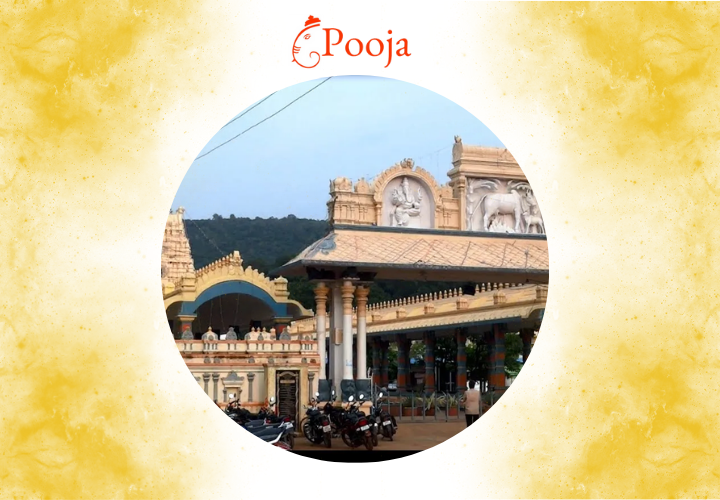About this puja
The Shiva Temple in Mahanandi, located in the Kurnool district of Andhra Pradesh, India, is a revered Hindu temple dedicated to Lord Shiva. This ancient temple has a rich history and is renowned for its architectural splendor, religious significance, and captivating mythological tales.
Historical Background
The Mahanandi temple's origins are shrouded in antiquity, with historical records dating back to several centuries. It is believed that the temple was built during the reign of the Chalukya dynasty, which ruled the region from the 6th to the 12th centuries CE. Over the centuries, the temple saw contributions and renovations by various dynasties, including the Cholas, Pallavas, and Vijayanagara kings, who were known for their patronage of art and architecture.
Architectural Features
The Mahanandi Shiva Temple showcases a blend of architectural styles, reflecting the cultural influences of different periods. The temple complex is characterized by its Dravidian-style architecture, featuring towering gopurams (entrance towers), ornate mandapams (pillared halls), and intricate carvings depicting mythological motifs and deities. The main sanctum houses the Shiva Lingam, the principal deity of the temple, symbolizing the cosmic energy and creative force of Lord Shiva.
Stories and Legends
The Mahanandi temple is steeped in mythological tales and legends that add to its mystique and allure. One popular legend associated with the temple narrates the story of the demon king Hiranyakashipu and his son Prahlada. According to folklore, Prahlada, a devout follower of Lord Vishnu, performed intense penance at Mahanandi to seek the blessings of Lord Shiva. Pleased with his devotion, Lord Shiva appeared before Prahlada and granted him divine protection, symbolizing the triumph of devotion over adversity.
Another legend recounts the story of Nandi, the divine bull and vahana (vehicle) of Lord Shiva, who is said to have performed penance at Mahanandi to attain salvation. It is believed that the temple derives its name "Mahanandi" from this mythological tale, with "Maha" meaning great and "Nandi" referring to the sacred bull.
Spiritual Significance
The Mahanandi Shiva Temple holds immense spiritual significance for devotees seeking the blessings of Lord Shiva for prosperity, health, and spiritual growth. The temple is also revered as one of the Nava Nandis, a group of nine sacred temples dedicated to Lord Shiva in the region. Pilgrims visit Mahanandi to partake in religious rituals, offer prayers, and receive blessings from the divine.
Continued Reverence
Even today, the Mahanandi Shiva Temple continues to inspire devotees with its rich history, architectural grandeur, and profound spiritual resonance. It stands as a timeless symbol of devotion, faith, and the eternal presence of Lord Shiva, perpetuating the sacred legacy of Hinduism and the revered traditions of Andhra Pradesh.
Comments (0)

.png)







